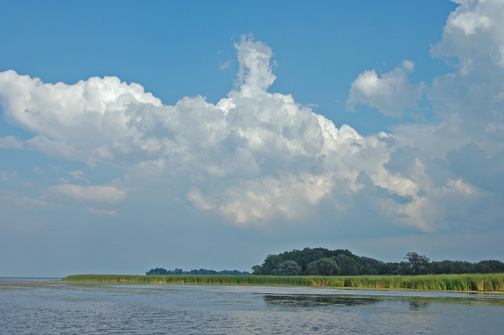I see the problem and I am reminded of the spectre of the
October 2012 super-storm Sandy which hit New Jersey, NYC and Long Island.
I remember Monroe County NY Emergency Management sending out a robo-call on my street to
evacuate -- the fire trucks announcing it at 3 am -- no one left Manitou
Beach Rd.
As a L. Ontario shoreline resident overlooking the shore [not directly on it], if I were involved in the public information regarding this
issue, I would educate and not frighten.
Take a look at L. Ontario levels: http://www.glerl.noaa.gov/data/now/wlevels/levels.html
Lake Ontario shorelines are vulnerable, but the likelihood of devastation is minimal.
The Town of Greece, State and Federal agencies, non-profits, the local environmentalists and others stand to gain if a hyped-up scenario of possible shoreline erosion wins the media battle. There are a lot of $$$ for erosion control and marsh restoration through Homeland Security and GLRI through Army Corps and other private contractors.
Lake Ontario shorelines are vulnerable, but the likelihood of devastation is minimal.
The Town of Greece, State and Federal agencies, non-profits, the local environmentalists and others stand to gain if a hyped-up scenario of possible shoreline erosion wins the media battle. There are a lot of $$$ for erosion control and marsh restoration through Homeland Security and GLRI through Army Corps and other private contractors.
The answer to lake flooding and erosion is to take a step back and consider
the entire Great Lakes basin, water levels, precipitation, weather events, etc.
over the last century and take a deep breath. From Oswego to Wilson, some homes are knowingly situated on fragile bluffs, cliffs and constantly eroding land, others on more stable shoreline. In days gone by only seasonal cottages primarily dotted the barrier beaches and were located close to the shore.
We often are unable to get good information about hydropower and especially in Canada. Because NYS buys so
much Quebec electricity off the grid, it pushes the IJC toward leniency in
hydroelectric production on the St. Lawrence.
Agencies and non-profits, marinas and others are ready to spend $$$ to 'restore' fragile bays and other sensitive areas with concrete break walls. Why?
We could lose the Great Lakes as a water resource entirely. . . . . perhaps that is what we could remember.













